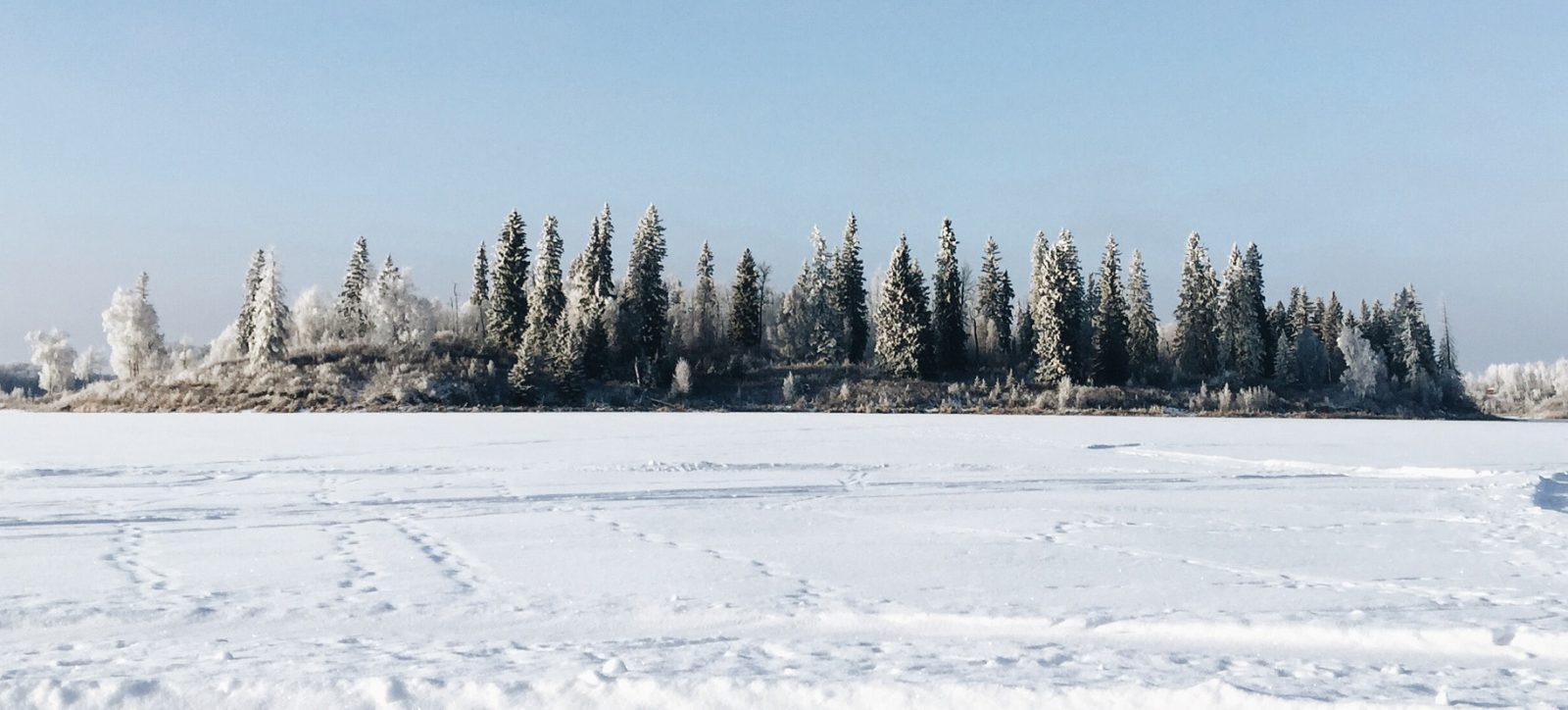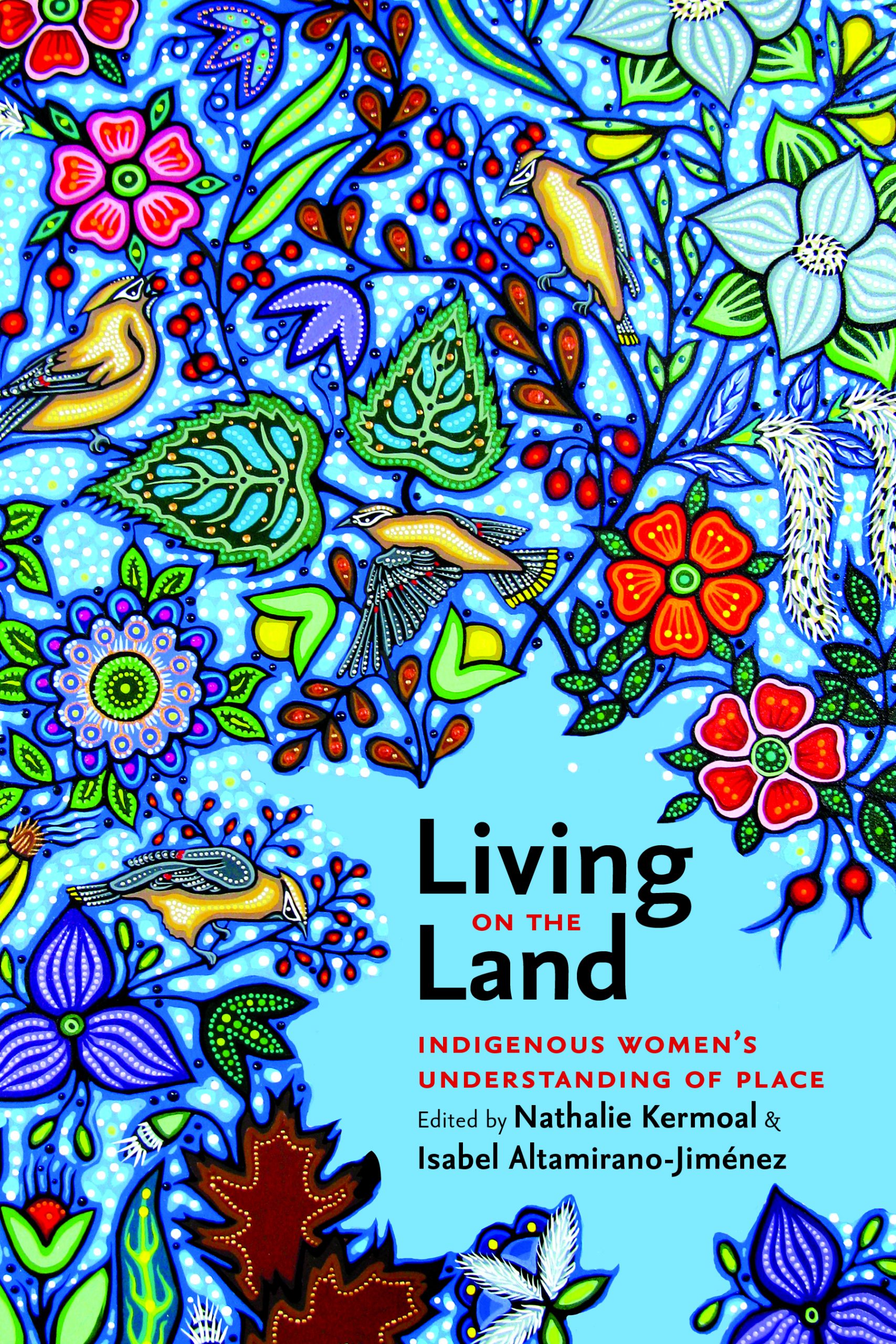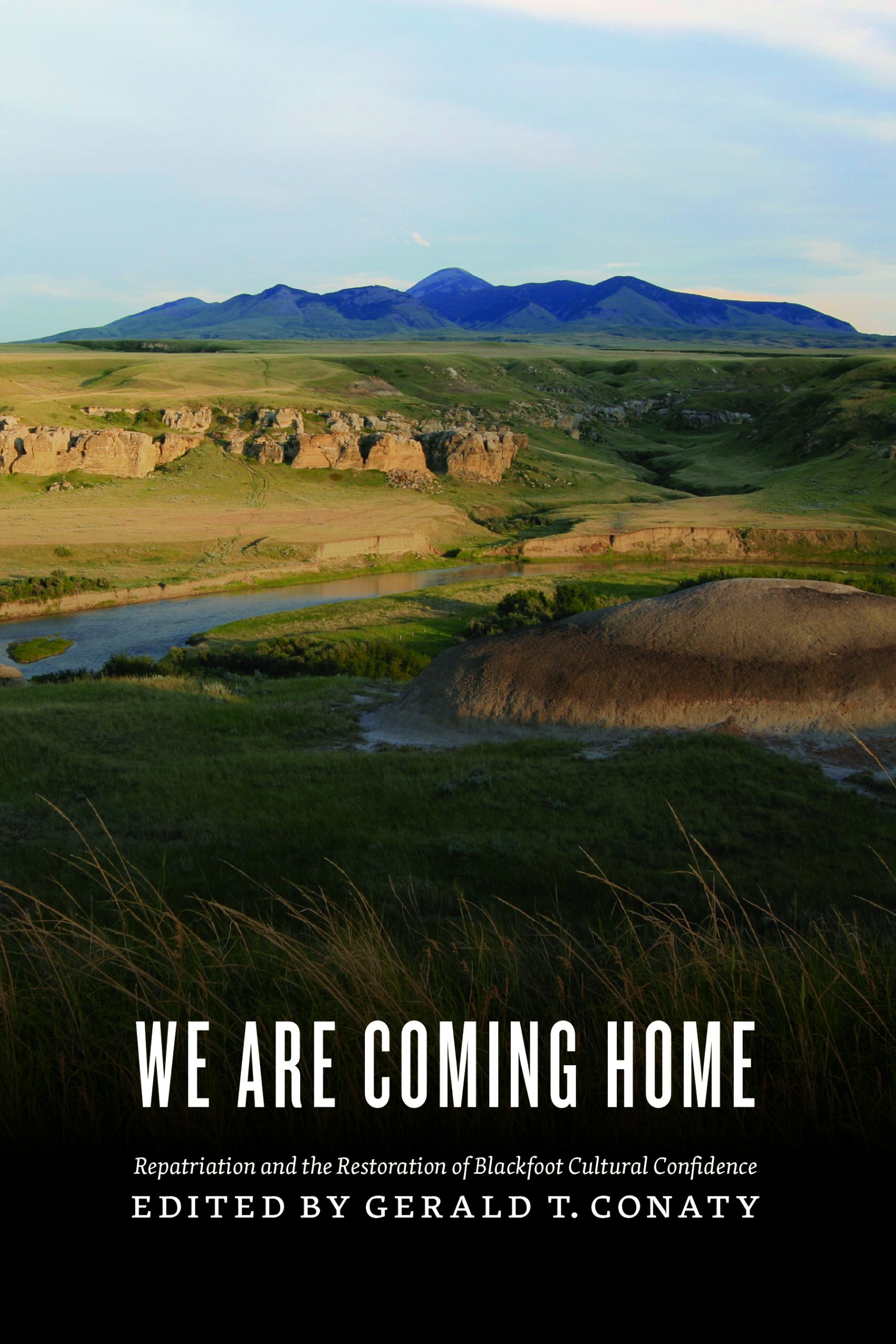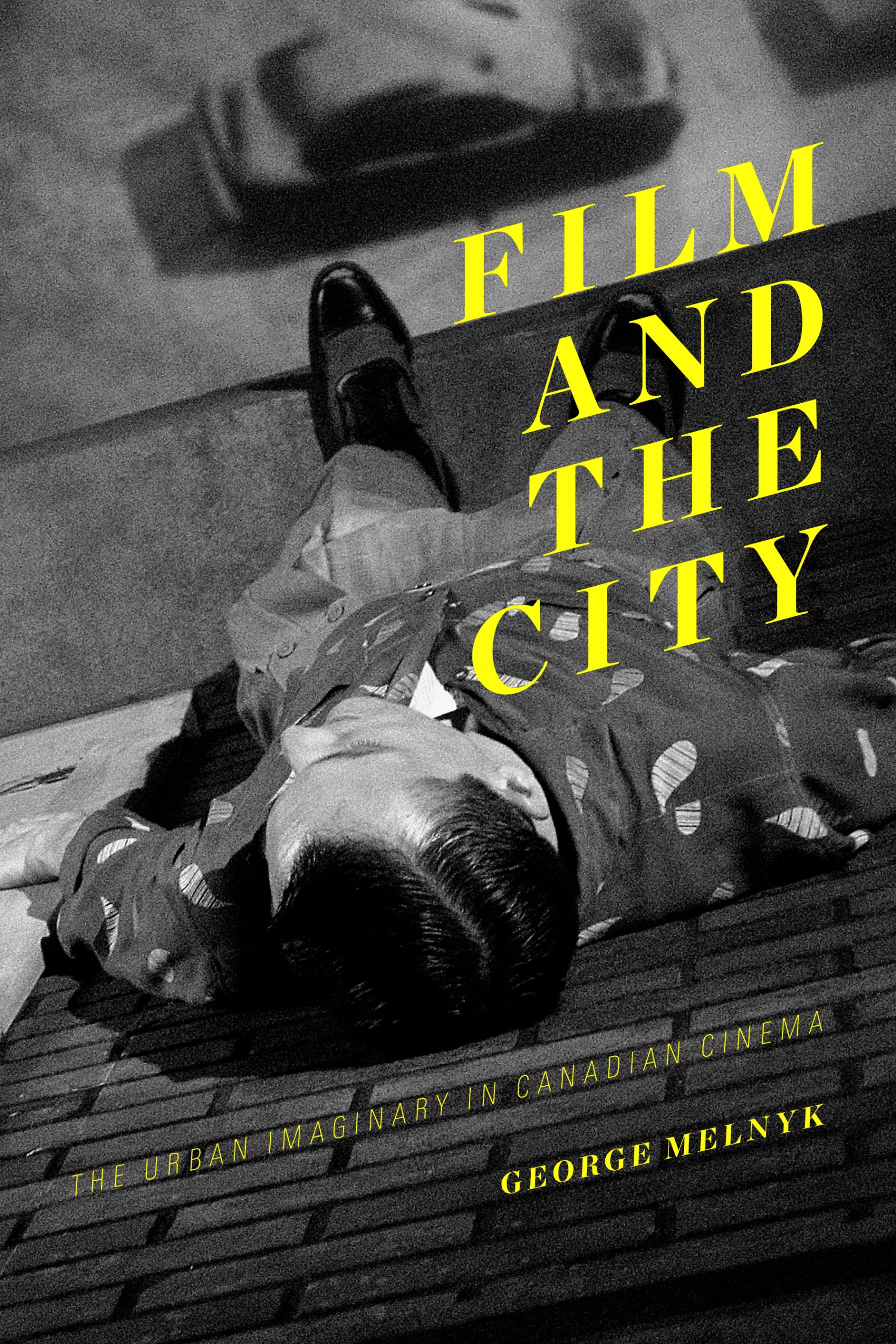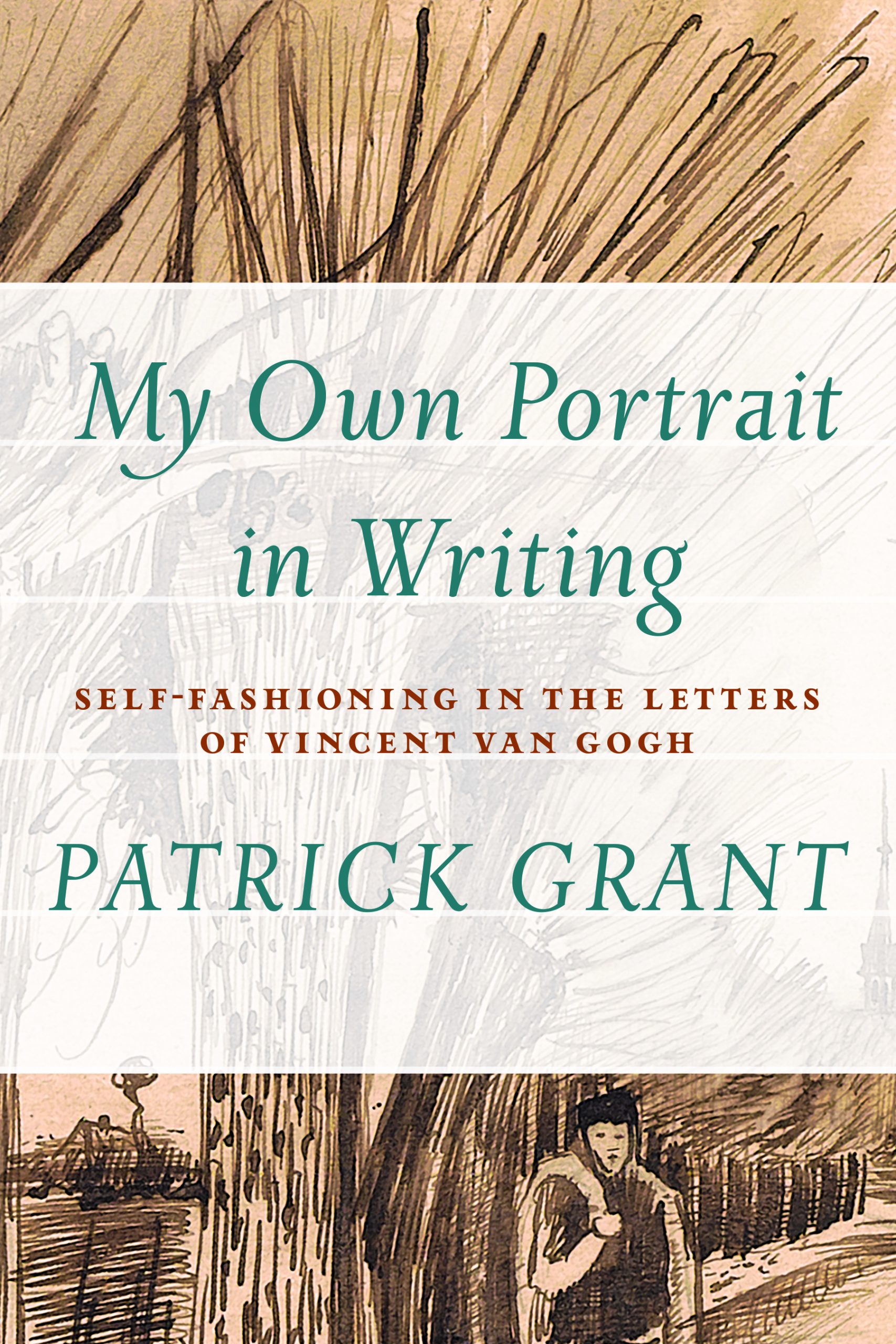Although winter doesn’t officially start for another few weeks, we’ve already donned our toques and mitts and parkas. Here in Edmonton, the snow has finally started falling and we’re celebrating the wonders of this chilly season by combing through our books to find depictions of winter. As you read through them, you will be impressed at the important role winter plays in so many different areas of life and history.
Winter is for storytelling
My grandmother always wore black. A black skirt and blouse, moccasins, and a black handkerchief tied around her head. She spoke only Cree.
She still had good eyesight for I remember she could spot an insect from across the room.
“Nohkôm,” I’d tell her, “you are so beautiful.”
“Kayâsês nôsisim,” she’d answer. “Long ago, granddaughter, I used to be a beautiful young woman.”
“You’re still beautiful, nohkôm,” I’d reply and ask her to tell me a story, which she would do only in the winter, for she said it was bad luck to tell them in the summer.
“Okay,” she’d answer, “but first sit there until I finish smoking.”
I would watch as she filled her little clay pipe with tobacco and stare as she took each puff, waiting patiently for her to finish so that she could tell me a story. Finally she’d begin…
From “Double Consciousness and Nehiyawak (Cree) Perspectives” by Shalene Jobin in Living on the Land
Winter and national identity
What role did the Vancouver Olympics play in developing a national consciousness? Without question, the 2010 Winter Games became a powerful vehicle for the expression of Canadian patriotism. Given Canada’s failure to win a single gold medal in the two previous Olympics held in Canada, it was fascinating to watch the mobilization of financial resources to enhance Canada’s medal count (or “podium performances”) to become “a world leader in high-performance sport.”[1] This initiative was clearly motivated by the patriotic goal of enhancing Canada’s position in global sport and thereby building national pride.
From “The Olympics as an Iconic Event” by Harry Hiller in How Canadians Communicate V: Sports
Winter and “inner weather”
Our final example is Van Gogh’s letter to his mother from St. Rémy, in which he describes a vineyard “all purple, crimson and yellow and green and violet,” again highlighting the immediacy of the colours. But the personal concerns expressed in the letter cause us also to see Van Gogh’s description of things that “are beautiful in the south” as something other than straightforward celebration. Thus, the letter begins by commenting on the fact that although his mother is “approaching 70,” she is holding up well. Vincent goes on to say that now that his brother Cor is about to leave for the Transvaal, the “sorrow . . . about parting and loss” will be painful for the whole family. Moreover, Theo’s health is failing, another cause for concern. For his part, Vincent writes, he has been painting in the “mistral,” the harsh winter wind that he often alludes to as a metaphor for his own disturbed “inner weather.”
From “The Painterly Writer” in “My Own Portrait in Writing” by Patrick Grant
Winter counts
Disease. The disastrous effects of alcohol compounded relentless epidemics of smallpox, measles, whooping cough, and other diseases introduced by Europeans. While we do not know for certain when the first outbreak reached the northwestern plains, Blackfoot winter counts give us a good picture of the frequency with which the diseases swept through the population. Winter counts are collections of pictographic signs representing the important events of each year. Keepers of the Beaver Bundle kept track of the days, months, moons, stars, and so on for spiritual and practical purposes. This led to the winter counts that record the long-term history. In the early years of the twentieth century, Bull Plume, a Piikani, transcribed one such record into an accounting ledger provided by the Indian Agent (Raczka 1979).[2] Disease is a recurrent theme in this winter count, with a significant epidemic recorded about every twenty to thirty years.
From We Are Coming Home edited by Gerald T. Conaty
Winter and the movies
Such flights of literary fancy eventually filter into his construction of Winnipeg’s identity as the perpetually winterbound city portrayed in Saddest Music. Its interiors are steamy and overheated, while its exteriors are manifestations of snowflake heaven. He presents a mise en scène that is quickly read as artificial: when added to the heavily filtered visual tones, this provides a childlike magic to his imagery. In Saddest Music, he moves the daytime universe of “Winterpeg’s” glaring, sun-sparkling, snowy winterscapes into the nightland of dream, where everything is muted by atmosphere and shadow. Even the brightest whites become filmy, unfocused, and bathed in an off-light, often weak and barely illuminating. The visual presentation of most of the film’s scenes is deliberately off-kilter, so the audience is never quite certain what it is viewing other than a sense of the make-belief.
From “The City of Transgressive Desires” in Film and the City by George Melnyk
[1] “Vision, Mission, and Goals, Own the Podium, 2014, http://ownthepodium.org/About-OTP/Vision,-Mission,-and-Goals.aspx
[2] The original document resides in the Glenbow Archives. Compiled ca. 1910, the count records events of significance to the Apatohsipiikani from 1764 to 1910. For a description and images, see “Item IW-Glen-22: Bill Plume’s Winter Count,” http://www.albertaonrecord.ca/iw-glen-22.
References
Raczka, Paul M. 1979. Winter Count: A History of the Blackfoot People. Brocket, AB: Oldman River Cultural Centre.
